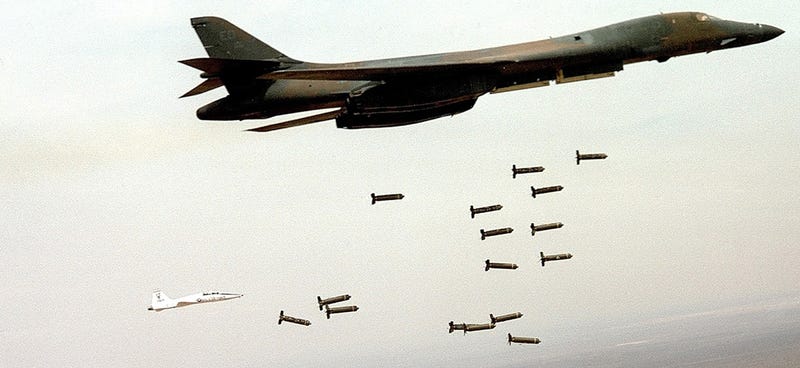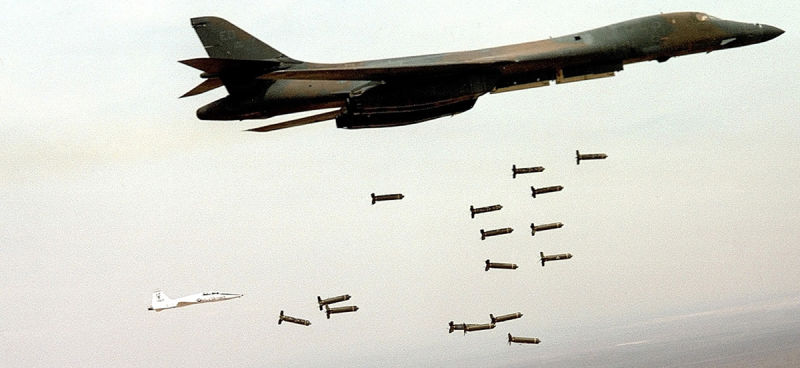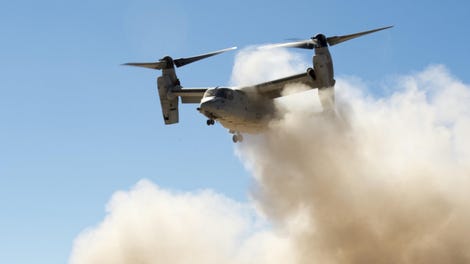
The U.S. military has been publishing incomplete data on airstrikes in Iraq, Syria and Afghanistan that may date back to 2001, according to a Military Times investigation. And that means thousands of deadly airstrikes may have gone uncounted.
Advertisement
In 2016 alone, U.S. Army helicopters and drones aircraft conducted 456 airstrikes in Afghanistan that were not counted in an open-source database that the U.S. Air Force manages. The accuracy of the database is crucial because Congress, academics, journalists, military analysts, American allies and others use it to assess expenses, combat logistics and human causalities. The gap raises questions of whether or not the military attempted to mislead the public on its activities in Iraq, Syria and Afghanistan.
U.S. Central Command said it was unable to track how far back the Army’s airstrike numbers had not been counted. Airstrikes from the AH-64 Apache, for example, are not tracked, according to one official.
Advertisement
The official added:
I can tell you, unequivocally, we are not trying to hide the number of strikes… That is just the way it has been tracked in the past. That’s what it’s always been.
Some of the confusion may have to do with how an airstrike is defined, even though it’s something that should be pretty simple. A single airstrike can be carried out by more than one aircraft on several targets and use a variety of munitions, according to the UK’s Ministry of Defense that also outlines coalition air strikes.
Here is the Army’s take, per the Military Times:
Sponsored
“It seems to me the collection or distribution of airstrike data is not an Army Title 10 responsibility,” a senior Army official told Military Times on the condition of anonymity. Title 10 of the U.S. Code sets the laws that dictate the military services’ roles, responsibilities and missions. “This responsibility should lie with the operational or combatant commander. Additionally, Apaches for example, conduct close combat attacks as a maneuver element supporting a ground force in contact with the enemy. I would not consider this in the category of ‘airstrike.’ “
Perhaps one of the biggest discrepancies in airstrike tallies is in Iraq and Syria. As of Jan. 31, the Defense Department has failed to account for nearly 6,000 air strikes since 2014, the year the U.S. began its air campaign against ISIS. The U.S. Air Force has the number of coalition airstrikes at 23,740 for 2016; the Defense Department has 17,861 through Jan. 31.
Advertisement
Advertisement
In Afghanistan, military officials provided previously unreleased airstrike data to Military Times from 2016. Navy Captain William Salvin, a spokesman for U.S. forces in Afghanistan, said that Apaches, armed UH-60 Blackhawk helicopters and MQ-1C Gray Eagle drones were used during strikes.
However, he failed to provide the most important information—an explanation of the discrepancies in airstrike figures:
Salvin also explained that the airstrikes conducted there — 1,071 total for last year, not 615 as the Air Force reports in its open-source database — are further classified by three categories: self defense, counter terror and strategic effects, which may be required when senior commanders believe U.S. firepower could help turn the tide in regions deemed vital to Afghanistan’s broader stability.
The spokesperson pretty much talked around the true reason why the Pentagon provides incomplete data, which can lead to inaccurate depictions of what’s happening on the ground.
Advertisement
What, exactly, does that mean? Salvin failed to define what self defense, counter terror or strategic effort entails and what happened during those 456 airstrikes. What is also suspicious about the omission is that the Pentagon could have published the number without drawing too much attention to it. That the military choose to omit the number, reveals A.) they probably didn’t think people would snoop around for the gap and B.) they really have something to hide and didn’t want to give the public a starting point from which to investigate.
And let’s break down the possible issues behind the near-6000 airstrikes that went uncounted by the Defense Department, for instance. Could civilian death tolls have been higher than reported? If an airstrike is not counted, the success of a given mission could be miscalculated, leaving open the possibility that the Pentagon’s claims of success on a given operation may not be completely accurate—or true.
At minimum, the glaring discrepancies should raise questions of how much good faith the public should put in the data the military releases to the public. At most, the military is straight up misleading the public and a comprehensive investigation is appropriate to discover why that is.
















